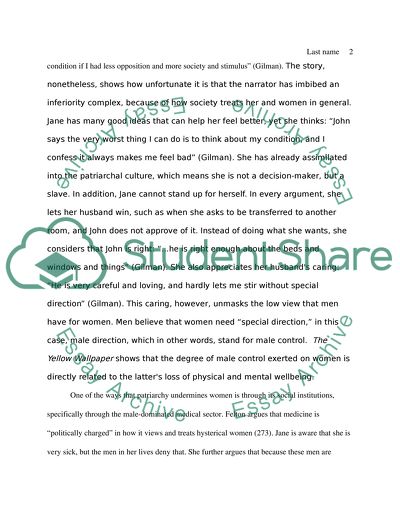Cite this document
(“Neurosis: A Gendered Diagnosis with Patriarchal Causes Essay”, n.d.)
Neurosis: A Gendered Diagnosis with Patriarchal Causes Essay. Retrieved from https://studentshare.org/literature/1438450-characterise-the-narrator-of-the-yellow-wall-paper
Neurosis: A Gendered Diagnosis with Patriarchal Causes Essay. Retrieved from https://studentshare.org/literature/1438450-characterise-the-narrator-of-the-yellow-wall-paper
(Neurosis: A Gendered Diagnosis With Patriarchal Causes Essay)
Neurosis: A Gendered Diagnosis With Patriarchal Causes Essay. https://studentshare.org/literature/1438450-characterise-the-narrator-of-the-yellow-wall-paper.
Neurosis: A Gendered Diagnosis With Patriarchal Causes Essay. https://studentshare.org/literature/1438450-characterise-the-narrator-of-the-yellow-wall-paper.
“Neurosis: A Gendered Diagnosis With Patriarchal Causes Essay”, n.d. https://studentshare.org/literature/1438450-characterise-the-narrator-of-the-yellow-wall-paper.


